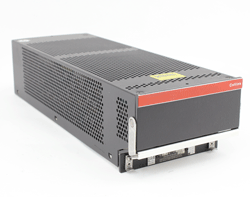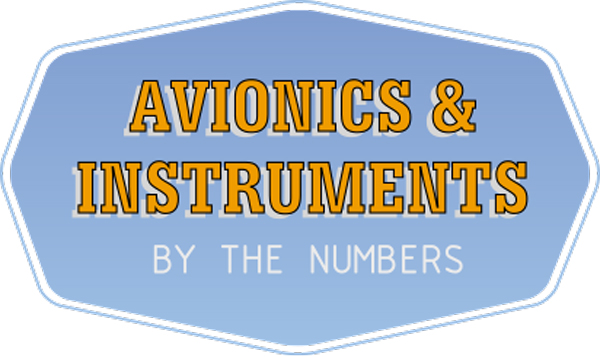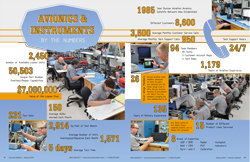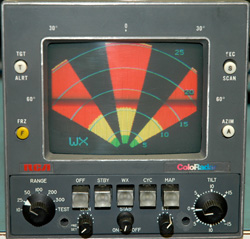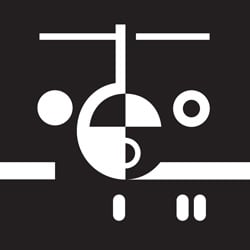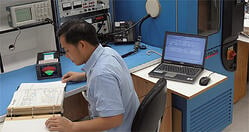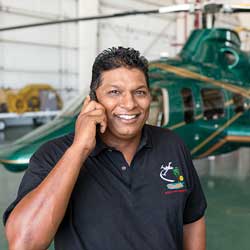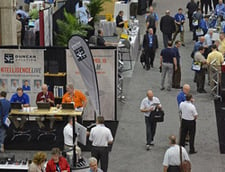 The Aircraft Electronics Association (AEA) declared the 58th annual AEA International Convention & Trade Show a success with record 1,897 attendees. According to reports about the traffic in Duncan Aviation’s booth from our team members who were at the show, most of the attendees must have stopped by.
The Aircraft Electronics Association (AEA) declared the 58th annual AEA International Convention & Trade Show a success with record 1,897 attendees. According to reports about the traffic in Duncan Aviation’s booth from our team members who were at the show, most of the attendees must have stopped by.
By and large, the best part of AEA was the face-to-face connections made with customers and vendors, both old and new.
Here are some photos and personal highlights from several of Duncan Aviation team members who were in Dallas, Texas, at AEA 2015.
Larry Troyer, avionics instruments tech rep
The biggest highlight for me was meeting face-to-face with some customers I have worked with on the phone. It was good to establish those relationships and renew old ones.
Scott McKenzie, avionics instrument tech rep
My highlight for this conference would be the same as all of the others that I have attended in the past. That is the opportunity to meet the customer's face-to-face that I communicate with on a regular basis, either on the phone or email. The personal interaction seems to go a long way in helping build not only a good working relationship, but in many cases true friendships as well.
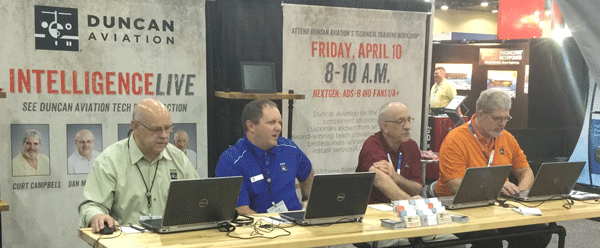 Duncan Aviation Avionics Instruments Tech reps (L to R) Dan magnus, Scott McKenzie, Larry Troyer, Curt Campbell.
Duncan Aviation Avionics Instruments Tech reps (L to R) Dan magnus, Scott McKenzie, Larry Troyer, Curt Campbell.
Dan Magnus, avionics instrument tech rep
I found a lot of good information about upcoming requirements, such as ADS-B available.
Vince Cruickshank, rotable sales manager
I enjoyed being able to connect with so many long-time and new customer vendors in one venue. We spoke about the new growth between our companies and how we can better serve each other’s needs.
Mike Morgan, avionics sales rep
I always enjoy being able to connect with our vendors and build on those relationships, as well as, connect with potential new vendors and new products coming to market. Also during the convention this year I was able to get a better perspective of the state of the business aviation industry.
Michael Meyer, avionics team leader
There were more learning opportunities than I could possibly take advantage of. I was happy with the educational sessions I was able to attend. The main themes were ADS-B and connectivity. And the message I got is that the ADS-B mandate will not change and we have a lot of work to do by the end of 2019.
While walking the convention floor, I was able to see some of the new equipment we will be using in the near future.
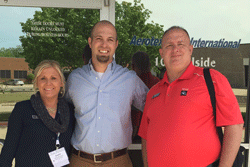
Vince Cruickshank and Jamie Blackman with Taylor Mason from Aerotex International.
Jamie Blackman, rotable manager
This year’s convention was great! I had the opportunity to meet several people and vendors for the first time, many of which I've been working with on the phone for years! It's nice to put a face to the voice. Vince Cruickshank and I had a wonderful opportunity to tour the offices of Aerotex International, a Duncan customer and vendor.
Brian Leffers, avionics install manager
My highlights were moving specific programs forward with several avionics OEMs, such as The highlights of my conference experience was being able to move specific programs forward by asking questions and addressing concerns with several avionics OEMs, such as GoGo, Universal, Collins and Honeywell.


